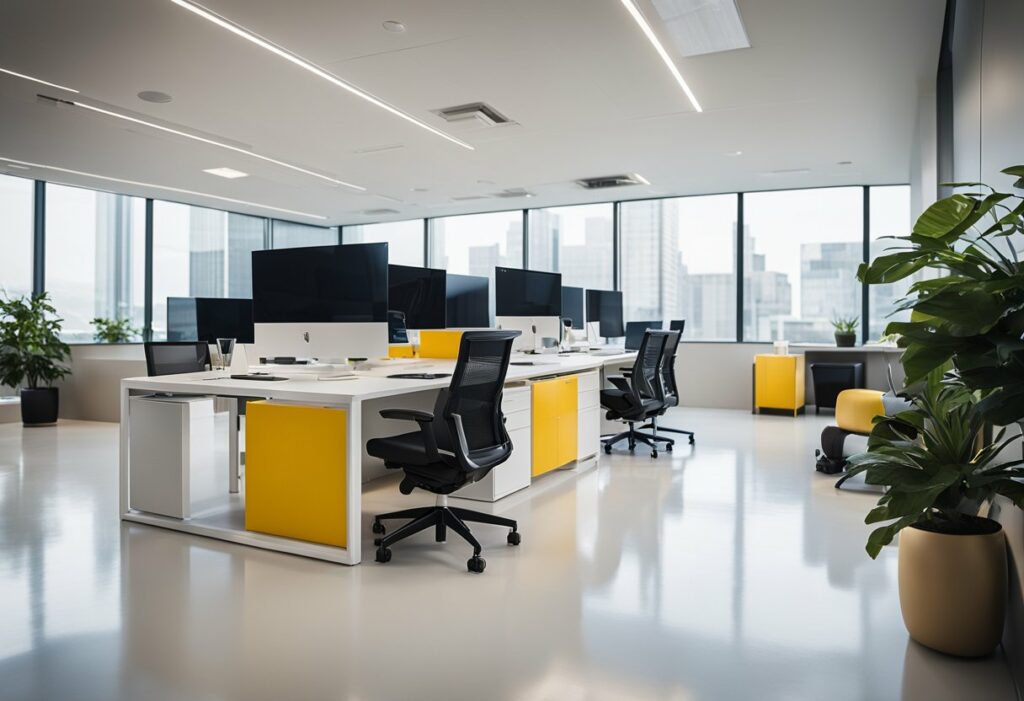Scandinavian interior design is a minimalistic and functional design style that originated in the Nordic countries, including Denmark, Norway, and Sweden. It is characterised by clean lines, neutral colours, and a focus on simplicity and coziness. The style has gained popularity worldwide due to its timeless appeal and ability to create a warm and inviting atmosphere in any space.

One of the defining characteristics of Scandinavian interior design is its emphasis on functionality. Furniture and accessories are chosen for their practicality and utility, while still maintaining a sense of beauty and elegance. The style also incorporates natural materials, such as wood and stone, and utilises natural light to create a sense of warmth and comfort.
If you’re looking to create a Scandinavian-inspired space in your home, there are several key elements to consider. From colour and texture to furniture and accessories, each element plays a role in creating the overall aesthetic of the space. By incorporating these elements into your design, you can create a cozy and inviting atmosphere that is both functional and beautiful.
Key Takeaways
- Scandinavian interior design is a minimalistic and functional design style that originated in the Nordic countries.
- The style emphasises functionality, natural materials, and natural light to create a warm and inviting atmosphere.
- Key elements of Scandinavian interior design include clean lines, neutral colours, natural materials, and practical furniture and accessories.
History of Scandinavian Design
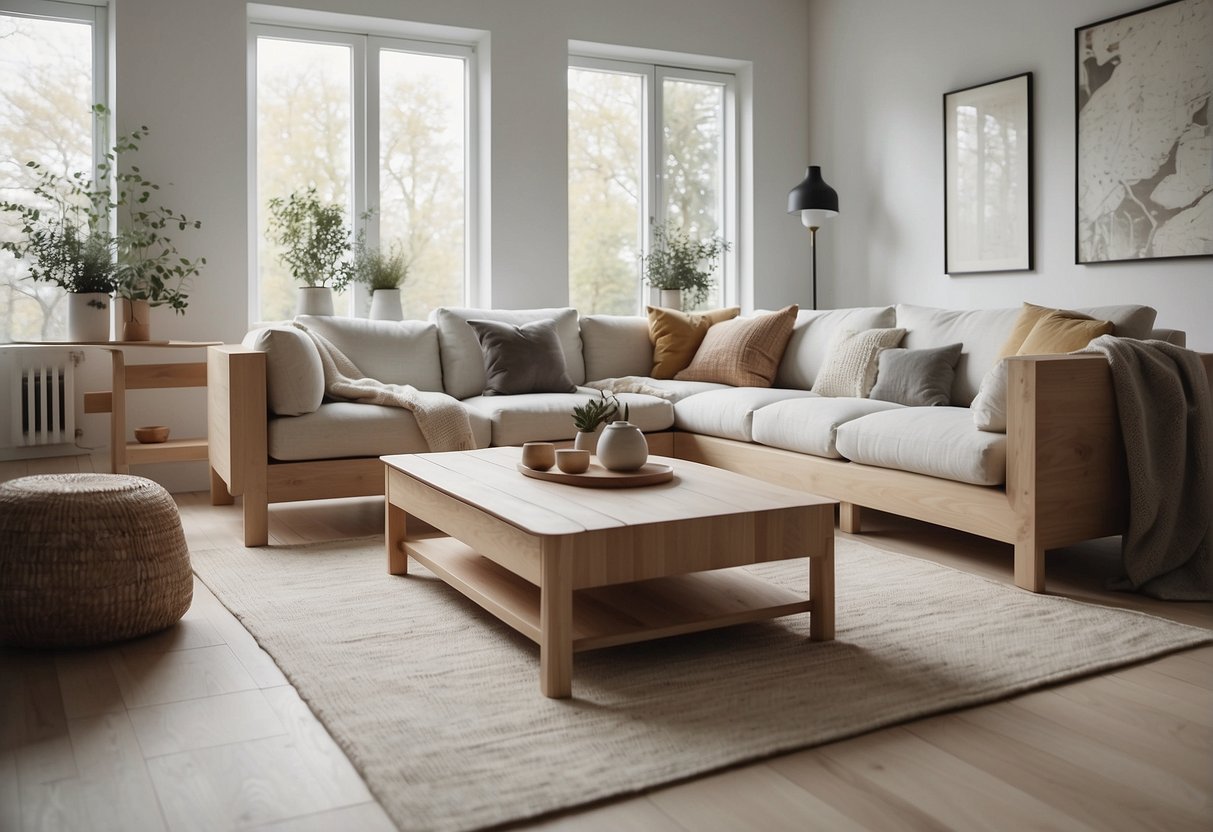
Scandinavian design has a rich history that dates back to the early 20th century. The design style emerged in the Nordic countries of Denmark, Norway, and Sweden and was largely influenced by the harsh winters and long periods of darkness experienced in these regions.
Post-War Influence
After the war, the Scandinavian countries were faced with the challenge of rebuilding their economies and homes. This led to the emergence of a new design style that was characterised by simplicity, functionality, and affordability. The post-war era saw the rise of modernism in Europe and America, and Scandinavian modern style was one of its most popular offshoots.
Evolution of Nordic Style
The Nordic countries began to develop their own unique design style that was characterised by clean lines, minimalism, and functionality. The style was heavily influenced by the natural environment, with designers using natural materials such as wood, leather, and wool.
Denmark, Sweden, Norway, Finland, and Iceland all contributed to the evolution of the Nordic style, with each country developing its own unique take on the design movement. In Denmark, designers focused on creating furniture that was both functional and beautiful, while in Sweden, the focus was on creating simple, clean designs that were affordable and accessible to everyone.
Today, Scandinavian design is recognised all over the world for its simplicity, functionality, and enduring beauty. The design style has left an indelible mark on the world of interior design, and its influence can be seen in everything from furniture to lighting to textiles.
In conclusion, the history of Scandinavian design is a rich tapestry of simplicity, functionality, and enduring beauty. The post-war era saw the rise of modernism in Europe and America, and Scandinavian modern style was one of its most popular offshoots. The Nordic countries developed their own unique design style that was characterised by clean lines, minimalism, and functionality. Today, Scandinavian design is recognised all over the world for its enduring beauty and influence on the world of interior design.
Defining Characteristics
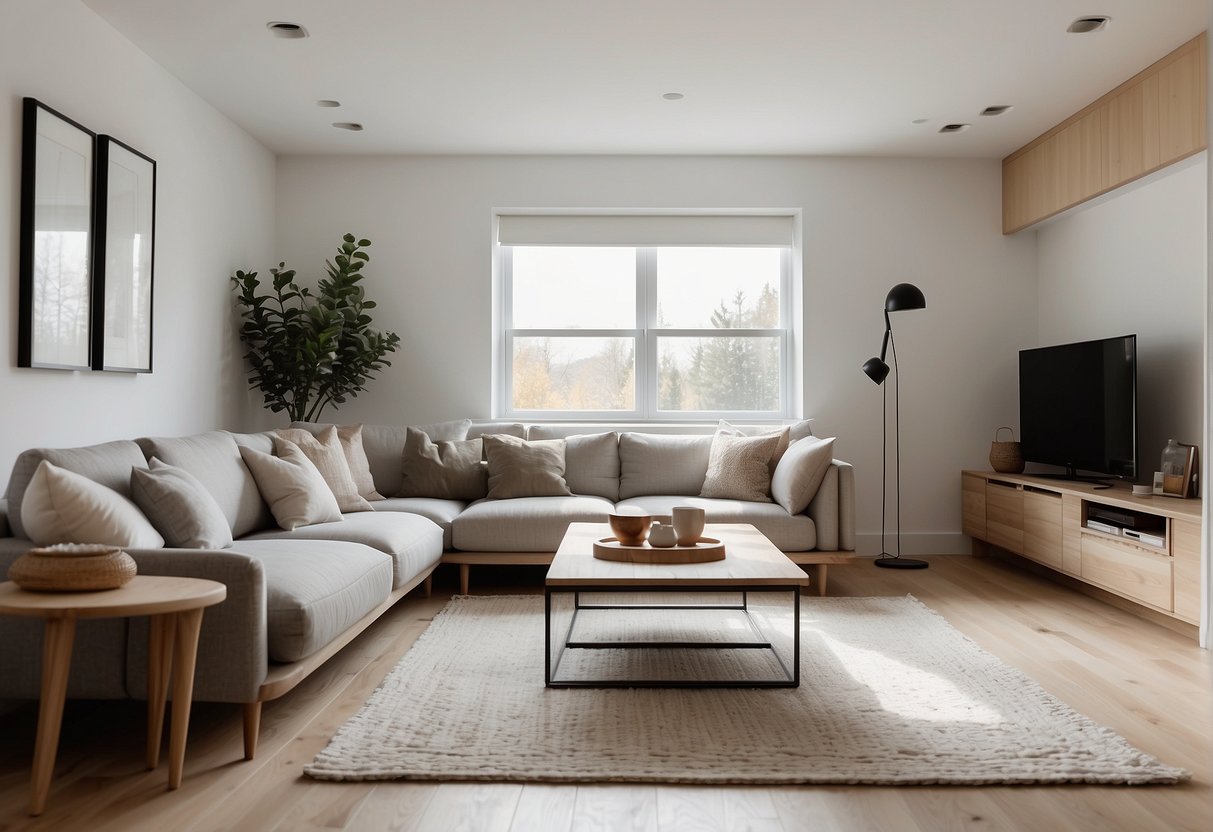
If you’re looking to create a Scandinavian-inspired interior, it’s important to understand the defining characteristics of this design style. Scandinavian interior design is all about creating a space that is functional, comfortable, and visually appealing. Here are some of the key characteristics that define this design style:
Simplicity and Functionality
Simplicity and functionality are at the heart of Scandinavian interior design. This design style is all about creating a space that is uncluttered, streamlined, and easy to navigate. Furniture is typically functional and unadorned, with a focus on comfort and practicality. This means that you won’t find a lot of ornate or fussy pieces in a Scandinavian-inspired interior. Instead, the focus is on creating a space that is simple, elegant, and easy to live in.
Neutral Colour Palette
One of the most distinctive features of Scandinavian interior design is its use of a neutral colour palette. This design style typically features a lot of white, grey, and beige, as well as other muted colours like pale blue and soft pink. The use of a neutral colour palette helps to create a calm and soothing environment, which is perfect for relaxing and unwinding.
Emphasis on Natural Light
Scandinavian interior design also places a strong emphasis on natural light. This means that windows are typically left unadorned, and curtains or blinds are kept minimal. The goal is to let as much natural light into the space as possible, which helps to create a bright and airy atmosphere. This emphasis on natural light also means that artificial lighting is kept to a minimum, with simple fixtures like pendant lights and table lamps used sparingly.
In addition to these defining characteristics, Scandinavian interior design also places a lot of emphasis on textures. Natural materials like wood, wool, and leather are often used to add warmth and texture to a space. By combining these elements in the right way, you can create a space that is both comfortable and visually appealing.
Key Elements of Scandinavian Interiors
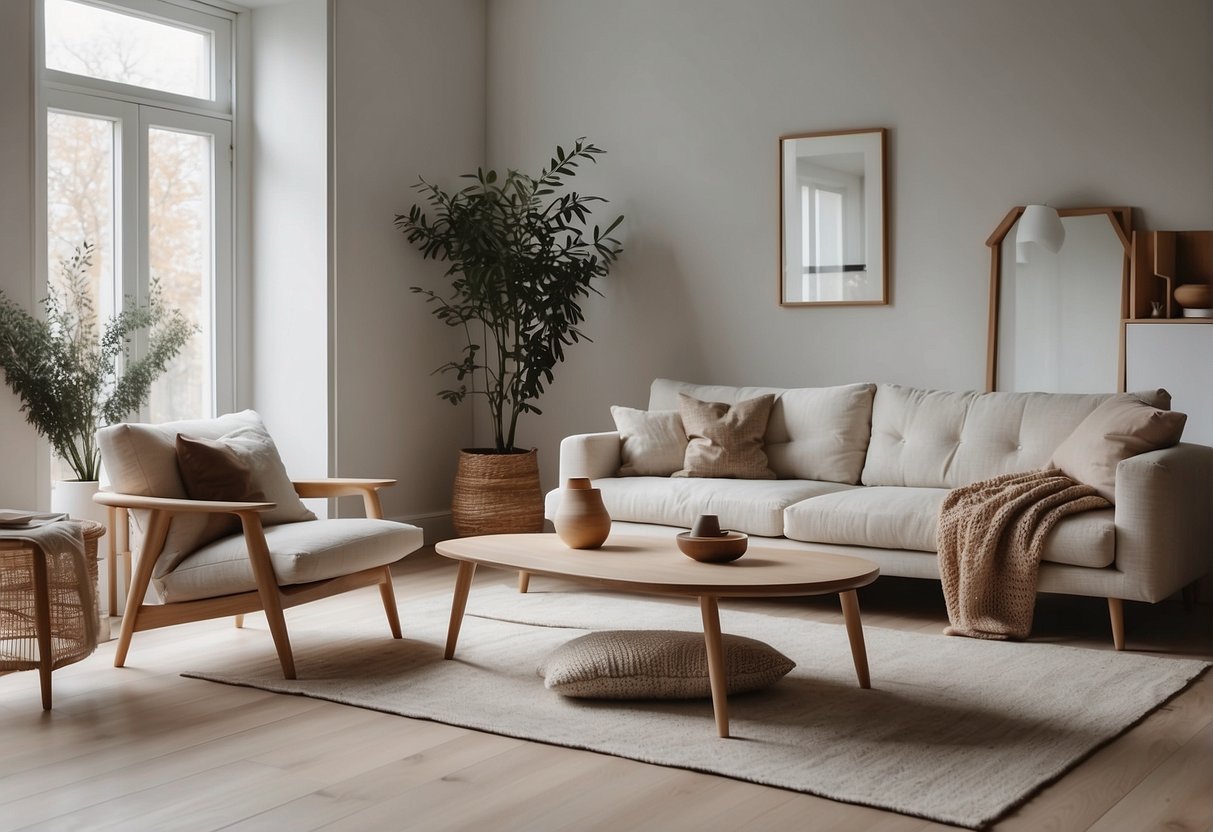
Scandinavian interior design is known for its minimalist and functional approach which focuses on creating a warm and inviting environment. If you are interested in incorporating the Scandinavian design style into your home, then you should consider the following key elements.
Use of Wood and Natural Materials
One of the most distinctive features of Scandinavian interior design is the use of natural materials such as wood, leather, wool, and linen. Light woods, such as oak and pine, are popular choices for furniture, while stone, glass, and metal can be used for decorative objects. The use of natural materials brings warmth and texture to the space, creating a cozy and comfortable atmosphere.
Importance of Textiles and Rugs
Scandinavian interior design also emphasizes the importance of textiles and rugs. Textiles such as curtains, cushions, and throws add softness and warmth to the space, while rugs help to define different areas and add texture to the floor. Wool is a popular choice for textiles and rugs as it is a natural and durable material that adds warmth and texture to the space.
Influence of Modernism
Scandinavian interior design has been influenced by modernism, particularly the mid-century modern movement. This is reflected in the clean lines, simple shapes, and functional design of Scandinavian furniture. Quality craftsmanship is also highly valued in Scandinavian design, with an emphasis on creating pieces that are both beautiful and functional.
Incorporating these key elements into your home can help you achieve the warm and inviting atmosphere that is characteristic of Scandinavian interior design. By using natural materials, textiles, and functional furniture, you can create a space that is both stylish and comfortable.
Colour and Texture in Scandinavian Design
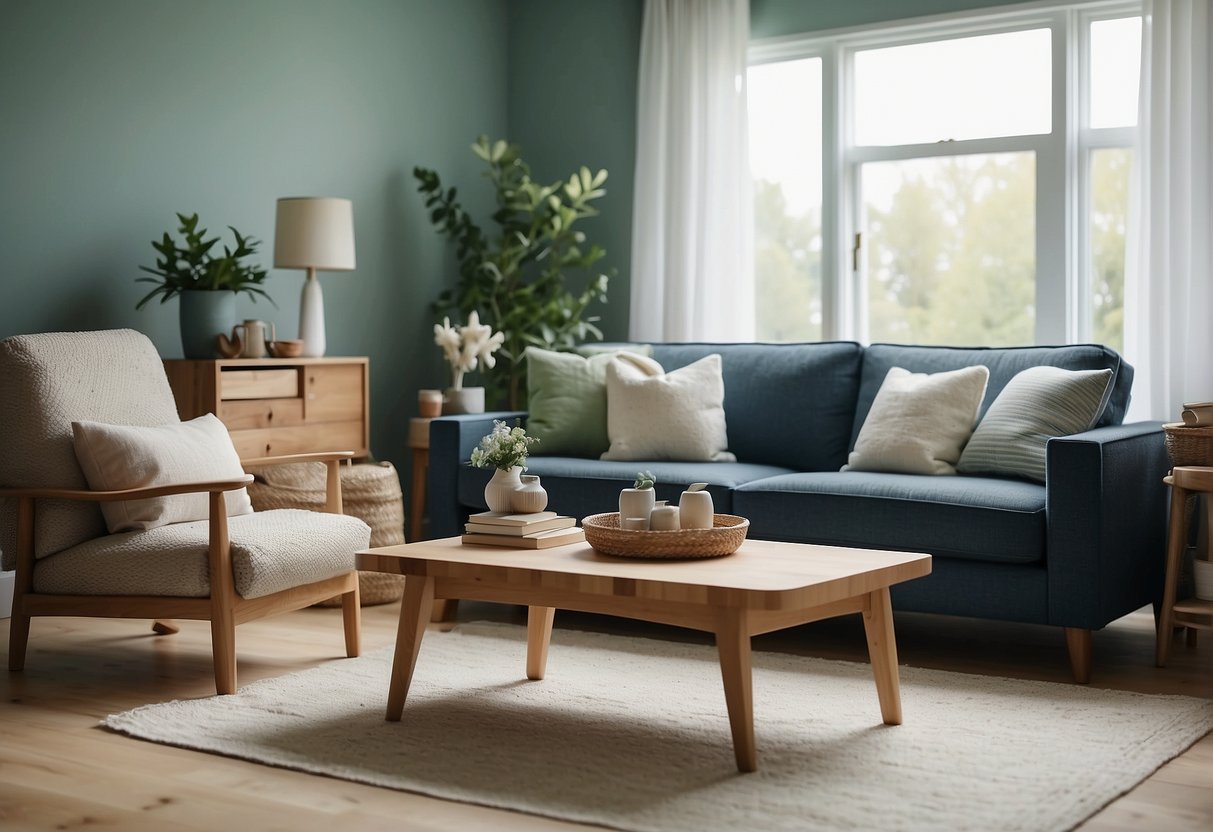
When it comes to Scandinavian interior design, the colour palette is a crucial component that sets the tone for the entire space. A key characteristic of this design style is minimalism, which means that neutral and warm tones are often used to create a calm and relaxing atmosphere.
Neutral and Warm Tones
White, black, and shades of grey are the primary colours used in Scandinavian design. These colours are chosen for their ability to reflect light and create an open and airy feel in the space. Additionally, warm tones such as taupe are often used to add depth and warmth to the room.
Accent Colours and Pops of Colour
While neutral tones dominate the Scandinavian colour palette, accent colours and pops of colour are also used to add interest and personality to the space. These colours are typically used sparingly and in small amounts to provide a subtle contrast to the neutral tones. Colours such as blue, green, and yellow are often used to add a touch of nature to the space.
Texture for Depth and Warmth
Texture is another essential element of Scandinavian interior design. Natural textures such as wood, wool, and linen are used to add depth and warmth to the space. These textures provide a tactile quality that makes the room feel more inviting and comfortable. Additionally, textures such as fur and sheepskin add a touch of luxury and coziness to the space.
In summary, the colour palette and texture are essential components of Scandinavian interior design. The use of neutral and warm tones creates a calming and relaxing atmosphere, while accent colours and pops of colour add interest and personality to the space. Natural textures provide depth and warmth, making the room feel more inviting and comfortable.
Furniture and Accessories
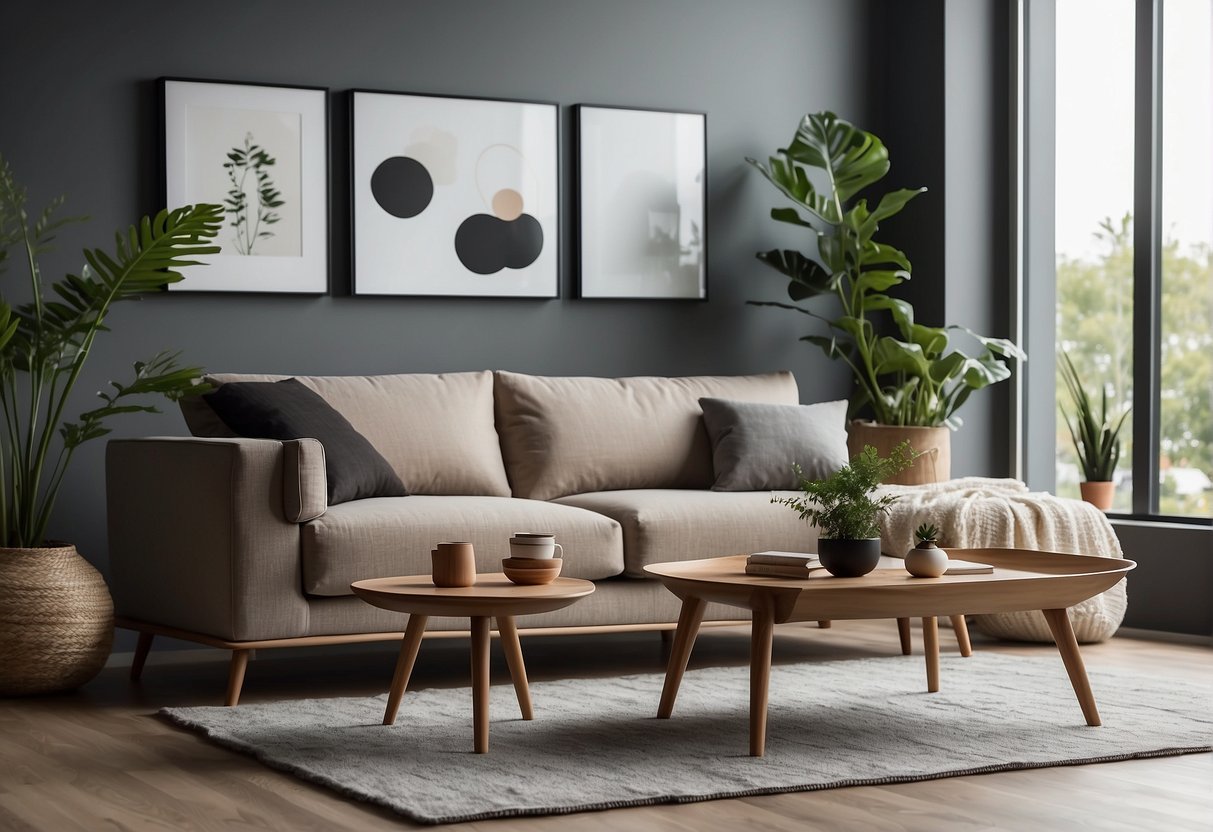
When it comes to Scandinavian interior design, furniture and accessories play a crucial role in creating the sleek and minimalist aesthetic that is so characteristic of this style. From wood furniture to sleek lighting fixtures, every piece has a purpose and adds to the overall look and feel of the space.
Iconic Scandinavian Furniture
Scandinavian furniture is known for its minimalist and functional design. It is often made of natural materials, such as wood, leather, and linen, and features clean lines and simple shapes. Some of the most iconic Scandinavian furniture pieces include the Egg Chair by Arne Jacobsen and the Paimio Chair by Alvar Aalto. These pieces are not only beautiful but also functional, making them perfect for any modern home.
Lighting and Lamps
Lighting is an essential part of Scandinavian interior design. It is used to create a warm and inviting atmosphere while also highlighting the beauty of the furniture and decor. Lamps and light fixtures are often sleek and simple, with clean lines and minimal decoration. The PH Artichoke Lamp by Poul Henningsen is a perfect example of this. It is a beautiful and functional piece that adds to the overall aesthetic of the space.
Decorative Accents
Decorative accents are the finishing touches that bring a room together. In Scandinavian interior design, decorative accents are often simple and understated. Artwork is used to add colour and interest to the space, while textiles such as rugs and throws add warmth and texture. The Krenit Bowl by Herbert Krenchel is a perfect example of a decorative accent that is both beautiful and functional. It is a simple yet elegant piece that adds to the overall aesthetic of the space.
In conclusion, furniture and accessories are crucial elements in creating a beautiful and functional Scandinavian interior design. From iconic furniture pieces to sleek lighting fixtures and decorative accents, every piece has a purpose and adds to the overall look and feel of the space.
Creating a Scandinavian-Inspired Space
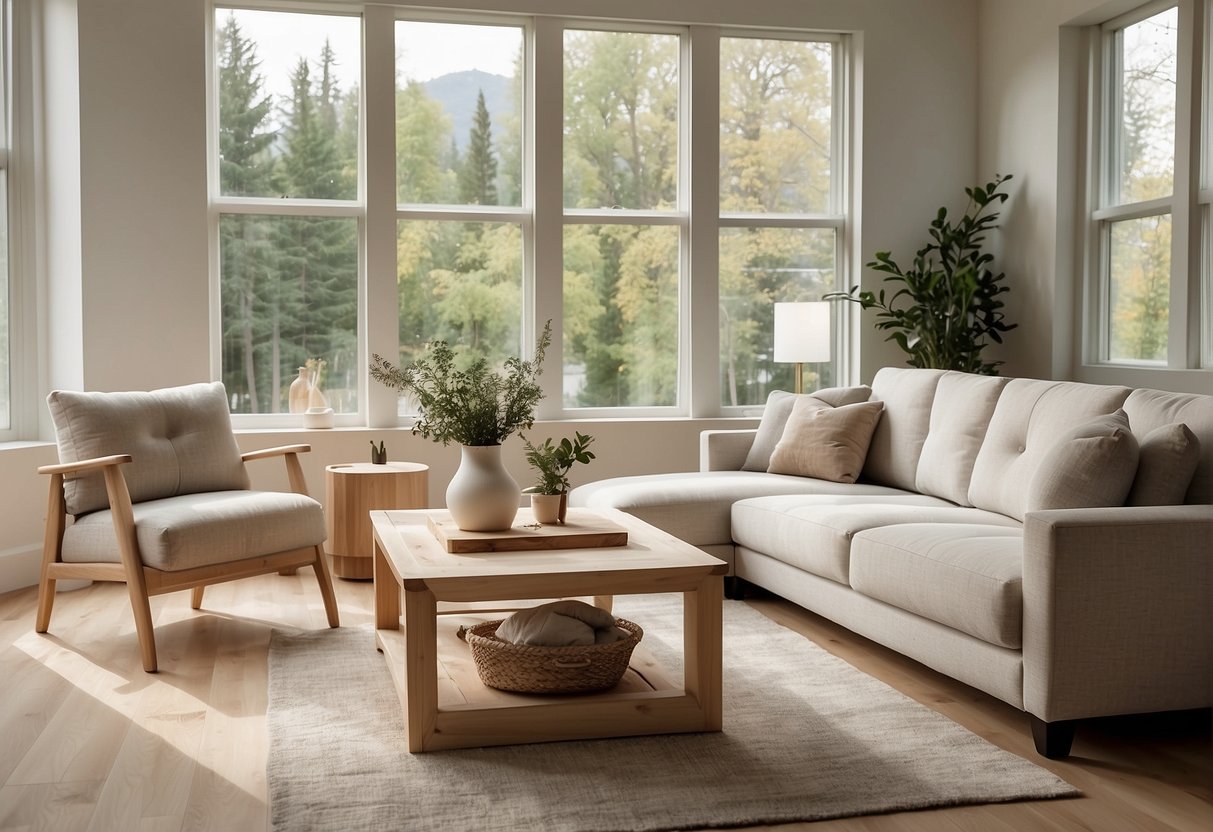
If you’re looking to create a Scandinavian-inspired space, there are a few key elements to keep in mind. From the layout and spaciousness to incorporating nature and greenery, and selecting quality pieces, there are many ways to achieve the light-filled, airy spaces that Scandinavian design is known for.
Layout and Spaciousness
One of the defining characteristics of Scandinavian design is its emphasis on spaciousness and simplicity. To achieve this, consider removing any unnecessary clutter or furniture from your space. This will allow you to create a more open and airy feel, which is essential for achieving the Scandinavian aesthetic.
In addition, consider using light, neutral colours on your walls and floors. This will help to reflect light and create a bright, welcoming atmosphere. You can also incorporate natural materials like wood and stone to add warmth and texture to your space.
Incorporating Nature and Greenery
Another key element of Scandinavian design is its emphasis on nature and greenery. To bring this into your space, consider adding plants and other natural elements like wood and stone.
Plants not only add a touch of greenery to your space, but they also help to purify the air and create a calming atmosphere. You can also incorporate natural materials like wood and stone to add warmth and texture to your space.
Selecting Quality Pieces
Finally, when it comes to selecting furniture and decor for your Scandinavian-inspired space, quality is key. Scandinavian design is known for its emphasis on quality over quantity, so consider investing in handmade or high-quality pieces that will last for years to come.
When selecting furniture, look for pieces that are simple, functional, and timeless. Avoid anything that is too ornate or fussy, as this can detract from the overall simplicity of the Scandinavian aesthetic.
Overall, creating a Scandinavian-inspired space is all about embracing simplicity, spaciousness, and nature. By incorporating these elements into your design, you can create a welcoming, light-filled space that is both beautiful and functional.
Lifestyle and Philosophy
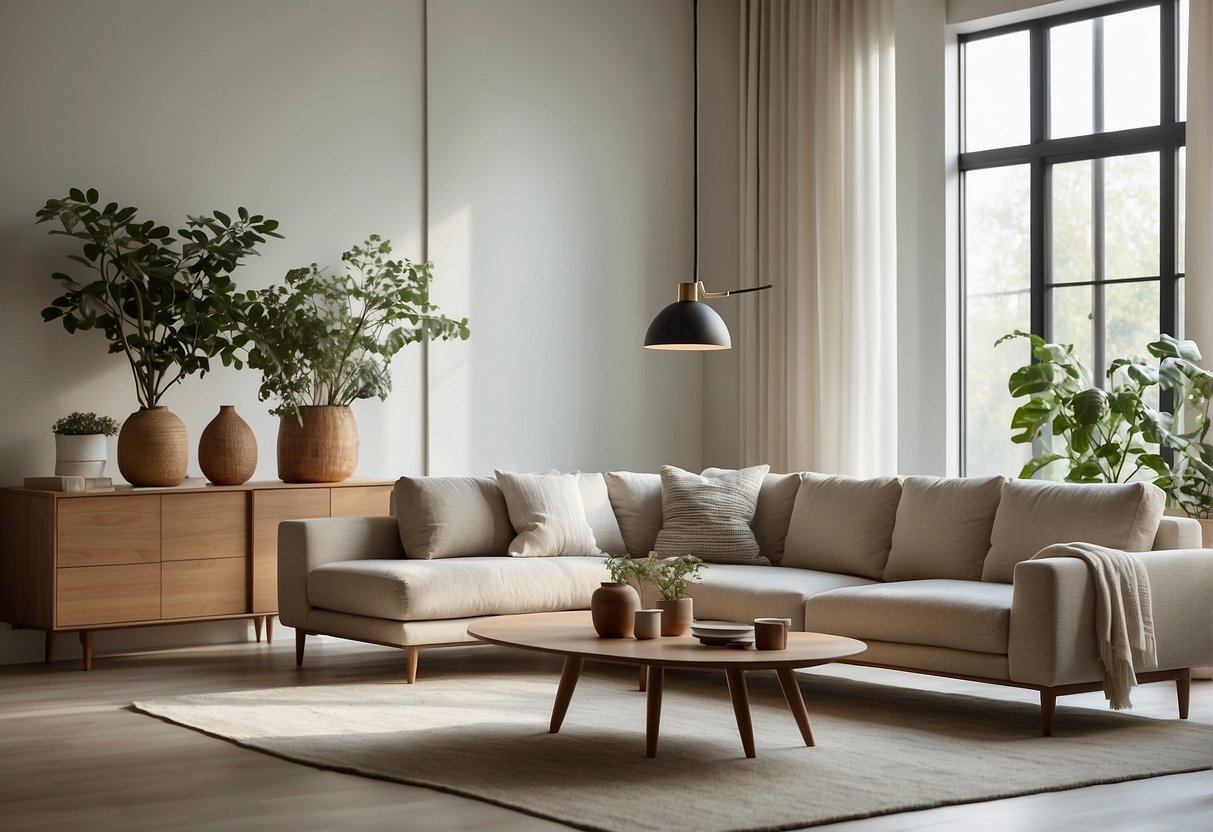
If you’re looking to create a calming and inviting space, Scandinavian interior design might be the perfect fit for you. The philosophy behind this design style is all about simplicity, functionality, and practicality. Here are a few key aspects of the Scandinavian lifestyle and philosophy that you can incorporate into your home:
Hygge and Coziness
Hygge (pronounced “hoo-ga”) is a Danish word that roughly translates to “coziness” or “contentment.” It’s a central part of Scandinavian culture and is often associated with the feeling of being warm, comfortable, and surrounded by loved ones. In terms of interior design, this translates to creating a space that’s inviting, relaxing, and comfortable. Think soft blankets, plush pillows, and warm lighting.
Sustainability and Eco-Friendly Choices
Scandinavian countries are known for their commitment to sustainability and eco-friendliness, and this philosophy extends to interior design as well. When creating a Scandinavian-inspired space, consider using natural materials like wood, linen, and wool. These materials are not only beautiful, but they’re also sustainable and long-lasting.
Minimalism as a Lifestyle
Minimalism is another key aspect of Scandinavian design. It’s all about simplifying your life and focusing on what’s truly important. When it comes to interior design, this means creating a space that’s clutter-free and functional. Think clean lines, neutral colours, and plenty of storage solutions to keep your space organised.
Incorporating these elements into your home can help create a calming and inviting space that’s both practical and beautiful. Whether you’re looking to overhaul your entire home or just add a few Scandinavian-inspired touches, there are plenty of options to choose from.
Frequently Asked Questions
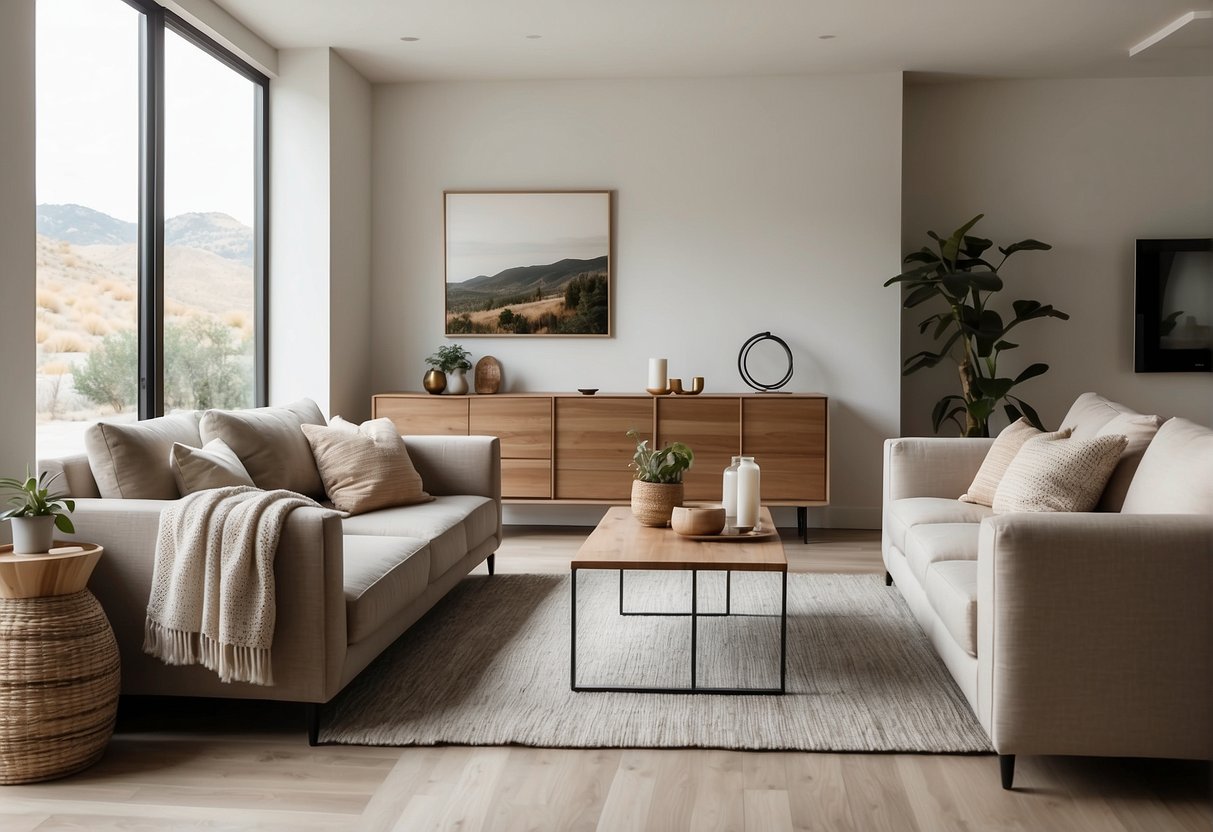
How can I create a cosy yet modern Scandinavian-style living room?
To create a cosy yet modern Scandinavian-style living room, start by choosing a neutral colour palette, such as whites, greys, and blues. Add texture to your space with natural materials like wood, wool, and leather. Incorporate statement pieces like a plush rug or a statement light fixture. Finally, add some greenery to bring the outside in and add a touch of warmth.
What are the essential elements to include in a Scandinavian-inspired bedroom?
The essential elements for a Scandinavian-inspired bedroom include a comfortable bed, natural materials like wood and linen, and soft lighting. Keep the colour palette neutral and add some texture with a plush rug or a chunky knit blanket. Finally, incorporate some greenery to bring life to the space.
Could you suggest some Scandinavian design ideas for a stylish kitchen?
For a stylish Scandinavian-inspired kitchen, choose a light colour palette and incorporate natural materials like wood and stone. Opt for minimalistic designs for your cabinets and appliances to keep the space feeling open and airy. Finally, add some greenery and a few statement pieces like a bold light fixture or a unique backsplash.
What distinguishes Scandinavian interior design from other design styles?
Scandinavian interior design is characterised by its simplicity, functionality, and focus on natural materials. It is known for its neutral colour palette, use of light, and minimalistic designs. Unlike other design styles, Scandinavian design prioritises comfort and practicality over ornate details.
How do I incorporate Scandinavian design principles into my home decor?
To incorporate Scandinavian design principles into your home decor, start by choosing a neutral colour palette and incorporating natural materials like wood, wool, and leather. Opt for minimalistic designs and focus on functionality over ornate details. Finally, add some greenery and soft lighting to create a warm and inviting space.
In what ways can I add a touch of Scandinavian flair to a small HDB flat?
To add a touch of Scandinavian flair to a small HDB flat, start by decluttering and keeping the space as open and airy as possible. Choose a light colour palette and incorporate natural materials like wood and stone. Opt for minimalistic designs for your furniture and decor, and focus on functionality. Finally, add some greenery and soft lighting to create a warm and inviting space.


